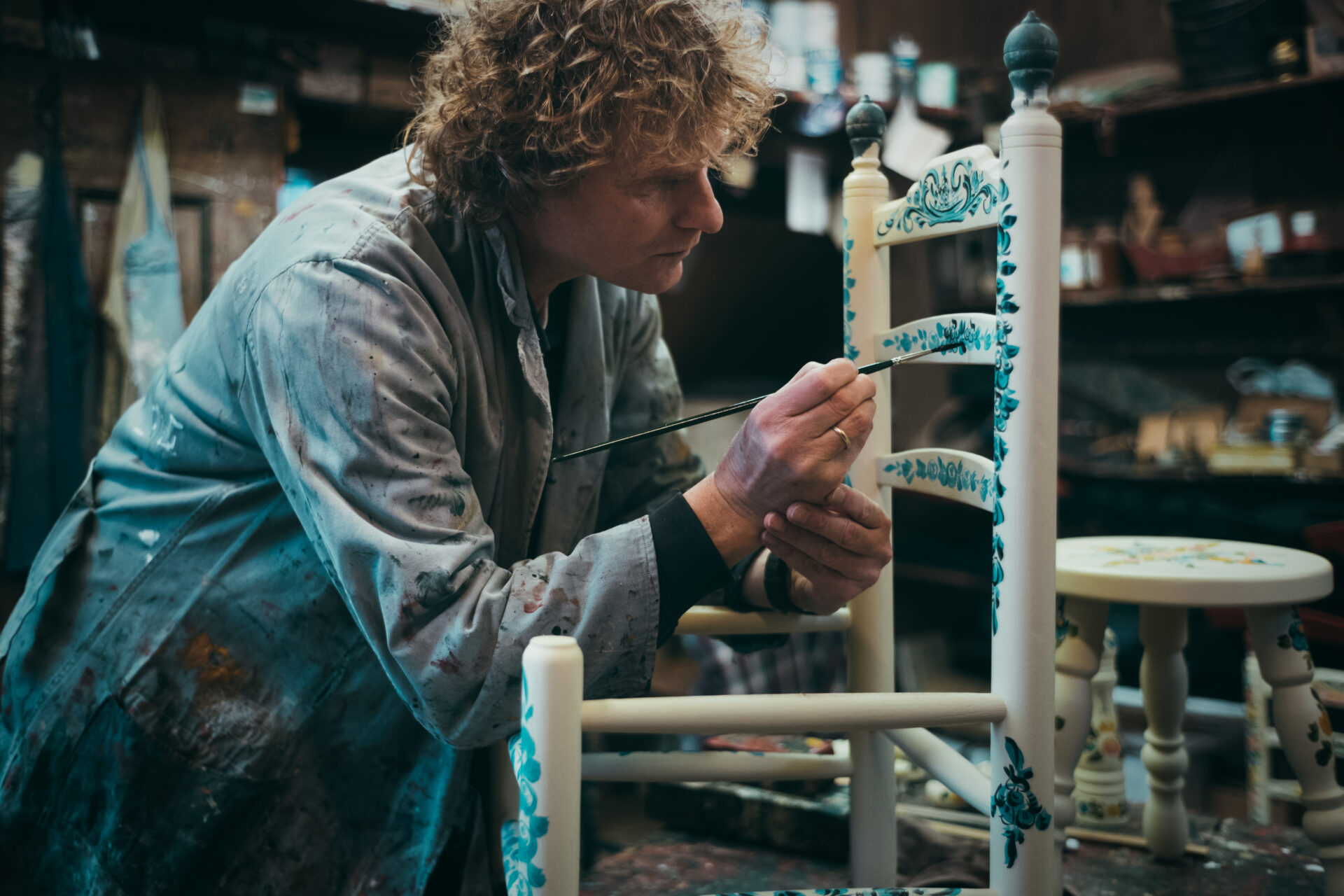
From Tree of Life to Prosperity Birds
When one thinks of Hindeloopen, the mind naturally thinks about images of the typical Hindelooper painting style. Shen Yuan, the designer of the Flora & Fauna fountain in Hindeloopen, was also impressed by the craftsmanship and the history of this unique town.
Confidently, Titus Stallmann moves his brush across the wood. Under his quick fingers, flowers, leaves, a bird, come to life almost effortlessly… “Now I need to pay close attention, this has to be right on the first try,” says Titus as he creates a sharp line. “There we go.” We are in the shop of Roosje Hindeloopen, where traditional painting is practiced. Everywhere you look, objects are painted in the Hindelooper style. All the painting work is done by Titus. Alongside his brother Johan, he leads Roosje Hindeloopen: Johan makes the furniture, Titus paints them.
Great-grandfather Arend Roosje
Titus and Johan are the fourth generation practicing this art form. It was their great-grandfather who joined the founder of Hindelooper painting in 1896: Arend Roosje. When he passed away in 1914, the Stallmann family continued the business. Since then, it has been passed down from father to son. Titus proudly narrates the history of his family, city, and craft. “The painting style we practice today originated in the seventeenth century. Hindeloopen was focused on maritime activities at that time. The ships mainly sailed to Scandinavia for the timber trade. There, they were exposed to traditional Scandinavian painting.” Maritime activities made Hindeloopen a prosperous city. Its inhabitants had the means to decorate their homes with luxurious woodwork. Some shipmasters and captains even brought painters from Scandinavia to paint their houses in the traditional style. Around 1800, trade declined, and Hindeloopen fell into decay. To prevent the disappearance of wood carving and painting, craftsmen took up the brush and chisel themselves. One of them was Arend Roosje. He based his work on Scandinavian painting but gave it his own twist, laying the foundation for the painting style we know today.

Chinese and Frisian Paradise Birds
Titus inspires the Chinese artist Shen Yuan with his story, who was tasked with designing the fountain for Hindeloopen. His narrative and the coat of arms of Hindeloopen merged with Shen Yuan’s cultural heritage. She created a fountain consisting of a copper tree of life, surrounded by two antlers. In the tree, there are five paradise birds, also known as prosperity birds, symbolizing a safe voyage. “Sailors often took them on their voyages,” says Titus. “You can find the prosperity bird in the flag of Hindeloopen and also in the patterns of my paintings. Thus, the fountain subtly but beautifully references our craft.” While the copper tree of life and the birds were crafted by local artisans in China, in Hindeloopen, diligent hands worked on the wooden antlers. In their workshop at Skipshelling Blom, a steel frame was covered with acoya wood. Titus honestly admits that it was mainly his brother Johan who worked on the antlers: “After all, he’s the man of wood. I’m glad Shen Yuan incorporated Hindeloopen’s history and our craft so beautifully into her fountain. It’s an artwork we can be proud of as a city.”

